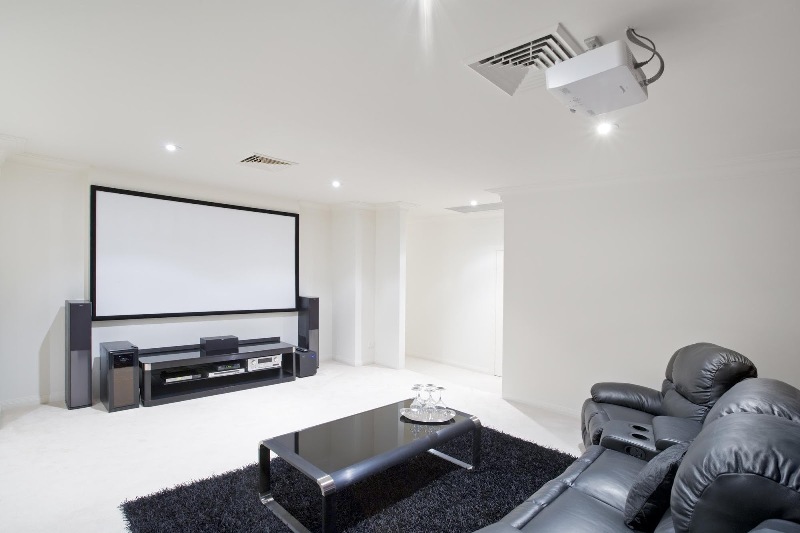Are you thinking about building a home theater?
There are definitely a lot of advantages to having the full cinematic experience under your own roof.
Before you launch into a full design though, you’ll want to consider the following three tips to get the most out of your home theater.
1. Choose a Dedicated Space
The first thing to consider when designing a home theater room is having a room solely dedicated to watching videos on a big screen. That means that nothing else will happen in your home theater than screening-related activities.
It might sound weird, but when your home theater shares space with other activities, it detracts from the whole cinematic experience. This is especially the case in spaces with an open floor plan.
Trying to create a non-dedicated theater in such an environment means you’re likely to experience the sounds and smells from other rooms such as the kitchen or, even worse, the bathroom.
Spare bedrooms might work, but for the optimal experience, it needs to be long enough so that viewers can maintain a proper distance from the screen. For example, if you’re using a video projector, you’ll need around 14 feet to cast a 150-inch diagonal picture. There are, however, short-throw projectors available too.
Also, pay special attention to insulation. A rating of R30 is standard for the ceiling, floor, ceiling, and exterior walls. Meanwhile, you’ll probably want to go with loosely packed R11 for the interior walls to help keep the sound of movie explosions from reverberating through the rest of your home.
2. Get the Right Sound

Most home theaters use a 7.1 surround sound system that includes one subwoofer and seven separate channel speakers.
One channel speaker is located at the center just above or below the viewing screen, one is to the left, and one to the right – each at ear level.
Then there are two side surround speakers on the sidewalls just behind the main row of seating, and two rear surrounds on the back wall. (how far apart depends on the system)
You’ll need to choose a spot such as a cabinet or closet that will house your receiver and other A/V equipment. Audio cables will run from this spot to each speaker. The cables should be at least 16-4 (16-gauge, four conductors) for the side and rear speakers, and 12 or 14-gauge cables for left, right, and center speakers.
3. Lighting and Furnishings

You want to be able to turn up the lighting before and after watching your movies. While you may think you want pitch black, you’ll likely find that dimmable light is ideal. You’ll also want the ability to do this with remote control.
Position lighting in such a way that it lights up the room by shining primarily on the walls and the floor. Avoid lighting the ceiling.
Manufacturers produce luxurious theater seats specially designed home theaters. They’re expensive though. You can go with reclining chairs or a couple of couches if these seats are too cost-prohibitive.
Is Building a Home Theater in Your Future?
Keep the above three tips in mind when building a home theater. And pretty soon, you’ll be to enjoy the show without ever stepping up to a ticket counter!
Meanwhile, keep checking back with us for more great articles on home and technology.





